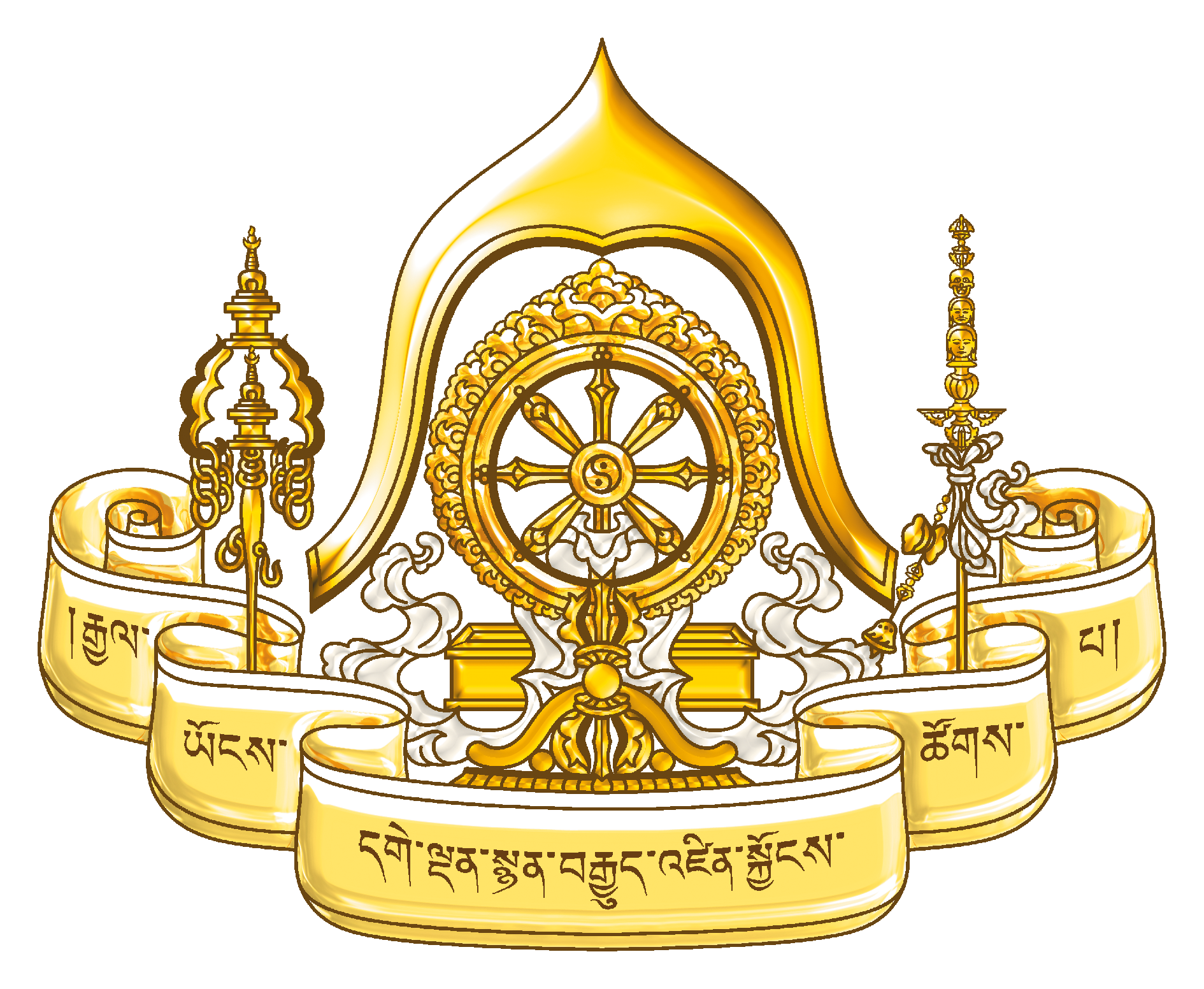Gonsar Tulku Rinpoche |
|
|
During the time of the 7th Dalai Lama, a young man from Amdo requested acceptance at the house of his countrymen in the Sera monastery near Lhasa. His appearance was so poor and shabby, that he was refused. Turning away from the house he met an old woman on the grounds of the monastery who suggested that he request admittance to Chadrel House and ensured him that it is there, where he belonged. He did as he was told, and then being accepted in the monastery he showed great enthusiasm in his studies. Soon the extraordinary qualities of a great master became apparent. He became famous as Master Ngawang Thöndrup and extensively served the teachings of the Buddha as Abbot of the Sera Je monastery and as one of the tutors of His Holiness the 8th Dalai Lama. He spent a lot of time in meditation in a cave on the Gephel-mountain near Lhasa, where later the Gonsar retreat monastery was built. When the people of Lhasa observed the new monastery they started to call him ‘Gonsar Rinpoche’ which in Tibetan means ‘the lama of the new monastery'. This name has remained with the lineage of the Gonsar Rinpoches until today. The old woman that had led the first Gonsar Rinpoche to his house in Sera college came to be known as an emanation of Palden Lhamo (the protectrin mother Goddess). The fourth Gonsar Rinpoche, the previous incarnation to the present one, also studied in Sera monastery. After completing his studies with the Geshe examinations in his early twenties, he travelled to Mongolia and became one of the greatest masters amongst the later Buddhist masters of Mongolia. Teaching there for more than thirty years and frequently showing supernatural powers, he was greatly cherished by the population and almost all of the contemporary masters of Mongolia, such as Tsenshab Ngawang Dorje, Tsenshab Ngödub Tsognyi, Geshe Ngawang Nyima, Geshe Senge, Guru Deva Rinpoche, etc. became his disciples. He returned to Tibet at the outbreak of the Bolshevik revolution and continued his vast activities there. His Holiness the 14th Dalai Lama's elder brother Taktser Rinpoche and the parents also belong to his distinguished disciples. The present Gonsar Rinpoche was born in 1949 in Shigatse, Tibet, to an aristocratic family known to be descendants of the ancient Tibetan kings. At that time his father was governor of the province Tsang, in western Tibet. At the age of three Gonsar Rinpoche was recognized as the fifth incarnation in the line of the Gonsar Rinpoche’s, which was confirmed by His Holiness the Dalai Lama. At the age of six he entered Sera monastery, the second largest Monastic University of Tibet at that time. From the very beginning he was raised and tutored under the kind care of Venerable Geshe Rabten. Gonsar Rinpoche received a great number of teachings and transmissions from His Holiness the Dalai Lama and many other masters, in particular from his root gurus Kyabje Trijang Dorje Chang and the Venerable Geshe Rabten. In 1959, when Tibet fell under the communist Chinese regime, Gonsar Rinpoche fled with his master to India and continued his studies there. At the same time he learned English and Hindi. In 1969 he started to translate into English the Buddhist teachings given to western students by his master Geshe Rabten. Ever since the Venerable Geshe Rabten passed away in 1986, Gonsar Rinpoche, after spending thirty-three years as his closest disciple, has continued his master's activities. At present Gonsar Rinpoche is director of the center ‘Rabten Choeling’ in Mont Pèlerin, as well as the other Rabten centers in Europe. He gives regular teachings directly in English, French, German or Tibetan. The first Gonsar Rinpoche was famous for his particularly vast and profound teachings on the complete path of mental development to full enlightenment. The present Gonsar Rinpoche is renowned as one of the very few contemporary masters capable of transmitting every aspect of the Buddha's teachings in a clear and moving experience to Western as well as Tibetan audiences. |
|
Gonsar Tulku Rinpoche
